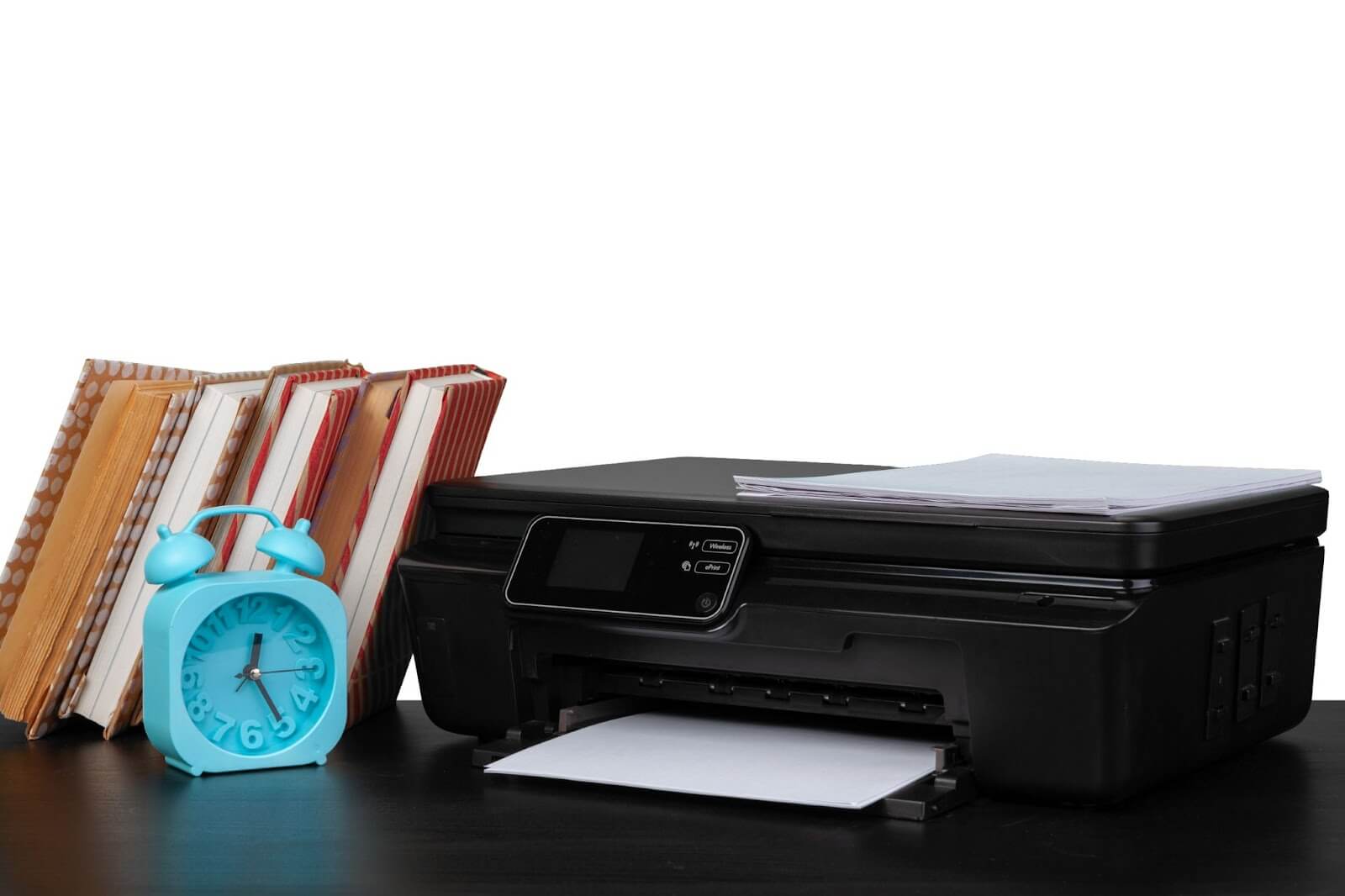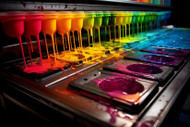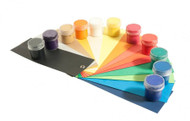5th Jul 2024
The Evolution of Ink Cartridges: From Early Designs to Modern Innovations
In the world of printing, the ink cartridge stands as a silent hero, often overlooked but undeniably essential. From the earliest forms of printing to today's advanced technologies, ink cartridges have undergone a remarkable evolution, shaping the way we reproduce documents, photos, and artwork. Join us on a journey through time as we explore the evolution of ink cartridges, tracing their path from rudimentary beginnings to the pinnacle of modern innovation.
The Early Days: Ink and Manuscripts
Long before the invention of the printing press, scribes painstakingly crafted manuscripts by hand, using quills dipped in ink. These early ink formulations were simple mixtures of natural dyes, such as plant extracts or minerals, combined with binders to create a viscous liquid suitable for writing. Each document was a labor of love, with ink applied meticulously to parchment or vellum.
The Birth of Printing Press: Moveable Type and Ink Balls
The invention of the printing press by Johannes Gutenberg in the 15th century revolutionized the way information was disseminated. Instead of hand-copying texts, movable type allowed for the mass production of books, pamphlets, and newspapers. Early printing presses used ink balls, leather pads stuffed with wool or hair, to apply ink to the raised metal type. Ink, in the form of a thick paste, was manually applied to the ink balls and then transferred to the printing surface.
The Rise of Cartridge Systems: Convenience Meets Efficiency
As printing technology advanced, so too did the need for more convenient and efficient ink delivery systems. In the mid-20th century, ink cartridges emerged as a solution to the messy and labor-intensive process of ink cartridges reservoirs. These early ink cartridges were typically large, cumbersome containers filled with liquid ink, often specific to the printer model.
The Origins of Ink Cartridges: Tracing the Beginnings of Printer Ink Containers
In order to understand the origins of ink cartridges, it is important to delve into the history of printer ink containers. The concept of containing ink for printing purposes can be traced back to as early as the 19th century. During this time, ink was commonly stored in bottles and manually poured into the printer.
However, it wasn’t until the 1970s that the first ink cartridges were developed. These early ink cartridges were not the familiar disposable cartridges we are accustomed to today, but rather reusable containers that were refilled with ink. This innovation greatly simplified the process of replacing ink, making it more efficient and convenient for users. As technology advanced, ink cartridges gradually evolved into the compact, cartridge-shaped containers we are familiar with in modern printers.
The Evolution of Ink Cartridges: From Early Designs to Modern-Day Solutions
Early ink cartridges were a far cry from the modern-day solutions we see today. In the earliest designs, ink was stored in bulky containers that required manual refilling. These containers were often messy and inconvenient, leading to inconsistent printing results. As technology progressed, ink cartridges began to take on a more compact and user-friendly design. The introduction of disposable ink cartridges revolutionized the printing industry, allowing for easy replacement and eliminating the need for messy refills. Over time, modern ink cartridges have become even more advanced, incorporating features such as smart chips that provide accurate ink level monitoring and automatic printer adjustments for optimal print quality. This evolution in ink cartridge design has transformed the way we print, making it more convenient, efficient, and accessible for users.
"Ink cartridges are not merely vessels of ink; they are conduits of creativity, transforming digital ideas into tangible expressions."
Innovations in Ink Cartridge Technology: Exploring Breakthroughs and Advancements
Ink cartridge technology has come a long way since its early beginnings. One of the major breakthroughs in this field was the development of thermal inkjet technology. This innovation allowed for the precise application of ink onto paper through the use of tiny heating elements that created bubbles to propel the ink onto the page. This breakthrough not only improved printing quality but also significantly reduced the size of ink cartridges, making them more compact and convenient for everyday use.
Another notable advancement in ink cartridge technology is the introduction of smart ink cartridges. These cartridges are equipped with electronic sensors that can communicate with the printer and provide users with real-time information about ink levels and printer performance. This not only helps to prevent any printing interruptions due to low ink but also allows users to plan their printing needs more effectively. Additionally, smart ink cartridges often come with features like auto-ordering, where the printer automatically orders new cartridges when ink levels are running low, ensuring a seamless printing experience.

The Impact of Ink Cartridges on Printing Industry: Revolutionizing the Way We Print
Ink cartridges have revolutionized the printing industry, transforming the way we print documents, images, and photographs. Gone are the days of messy and inconvenient ink bottles or tubes. With ink cartridges, the process of replacing and replenishing ink has become significantly easier and more efficient. This has not only saved time for both individual users and businesses but has also enhanced the overall printing experience.
Moreover, ink cartridges provide a higher level of precision and accuracy in printing. The quality of prints has improved tremendously, thanks to the advanced technologies incorpo`rated into ink cartridges. Vibrant colors, crisp texts, and sharp images are now effortlessly reproduced on paper. The advent of ink cartridges has fueled the growth of various industries, including advertising, photography, graphic design, and publishing, enabling professionals to achieve professional-grade prints with ease. Indeed, ink cartridges have left an indelible mark on the printing industry, shaping the way we approach printing tasks and forever changing our perception of what is possible.
The Digital Age: Inkjet and Toner Cartridges
The advent of digital printing in the late 20th century brought about a paradigm shift in ink cartridge design. Inkjet printers, utilizing microscopic nozzles to spray liquid ink onto the printing surface, became increasingly popular for home and office use. Inkjet cartridges evolved to contain a precise formulation of ink, housed in compact, disposable containers. Similarly, laser printers introduced toner cartridges, which use powdered ink fused onto the paper with heat.
Modern Innovations: High-Yield, Eco-Friendly, and Smart Cartridges
In today's fast-paced world, ink cartridge technology continues to push the boundaries of innovation. High-yield cartridges offer increased page yields, reducing the frequency of replacements and minimizing waste. Eco-friendly formulations utilize sustainable materials and manufacturing processes, addressing concerns about environmental impact. Smart cartridges feature integrated microchips that communicate with the printer, providing real-time ink level monitoring and automatic reordering.
Looking Ahead: The Future of Ink Cartridges
As we gaze into the future, the possibilities for ink cartridge innovation are endless. Advancements in nanotechnology may lead to even finer inkjet nozzles, allowing for higher-resolution prints with greater color accuracy. Bio-based inks derived from renewable sources could offer a more sustainable alternative to traditional petroleum-based formulations. And who knows, perhaps someday we'll see ink cartridges capable of printing three-dimensional objects, bringing science fiction closer to reality.
Conclusion:-
The evolution of ink cartridges is a testament to human ingenuity and the relentless pursuit of improvement. From humble beginnings as pots of ink and quills to the sophisticated cartridges of today, these essential components of the printing process have come a long way. As technology continues to advance, one thing is certain: ink cartridges will remain at the heart of our printing endeavors, shaping the way we communicate, create, and connect with the world.












